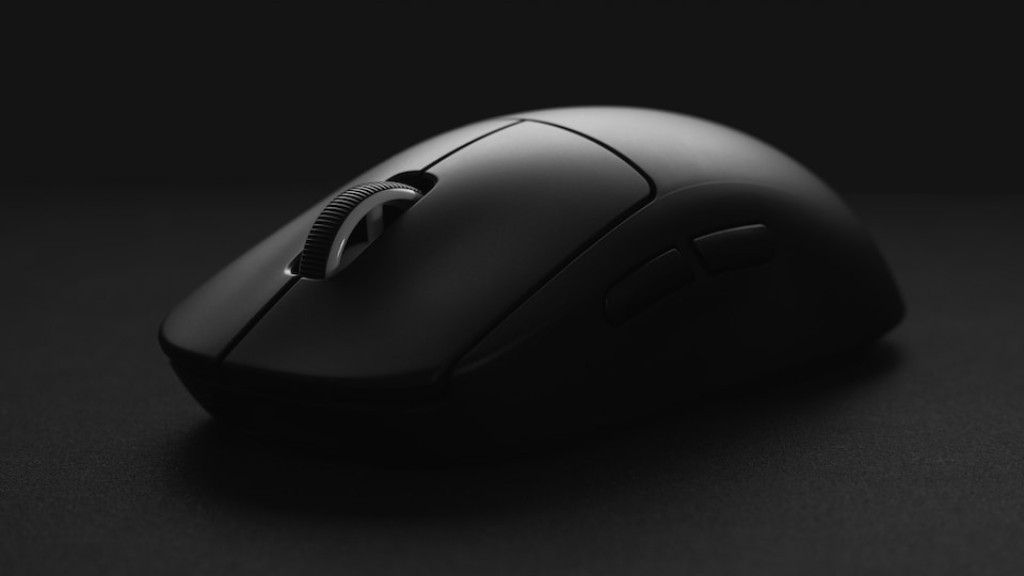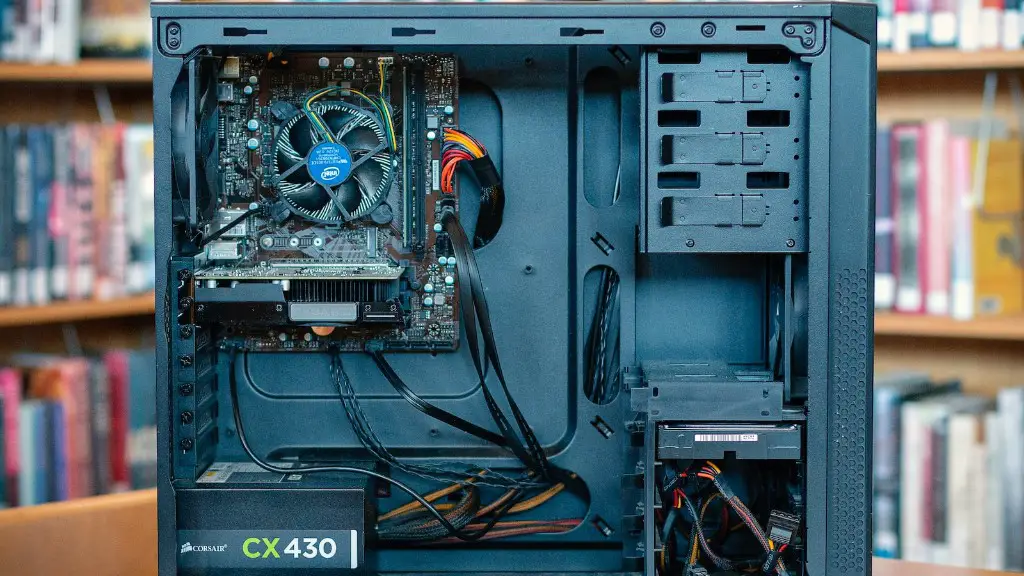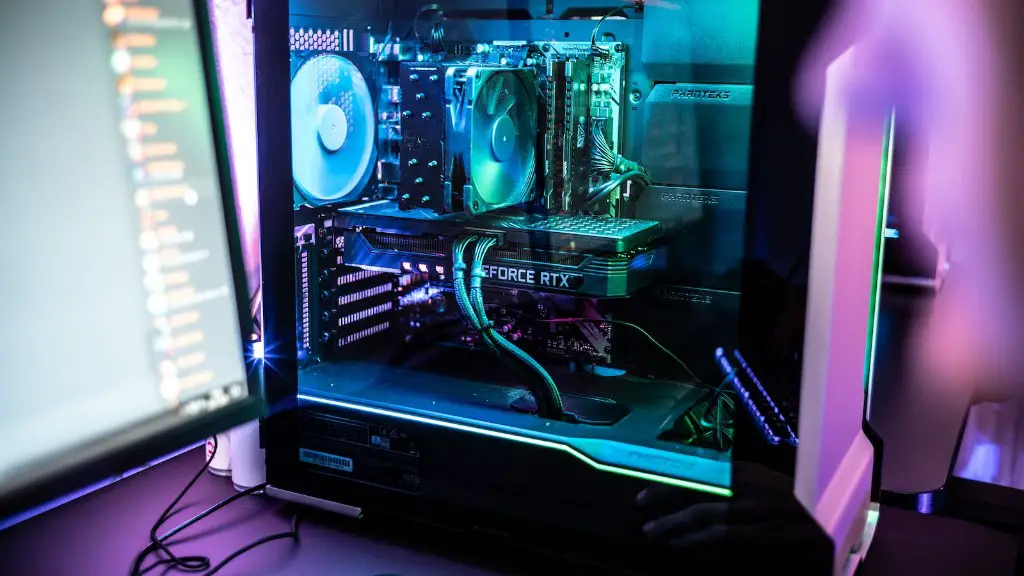Modern computer gaming demands the best equipment, and a gaming monitor is no exception. For smooth, lag-free gaming, it is recommended that gamers select a monitor that has a refresh rate of 144 Hertz, or Hz. A Hz rating of 144 indicates the monitor can display 144 frames per second, providing smoother motion and more lifelike visuals while gaming. Understanding Hz and the differences between display technologies is essential in choosing the right gaming monitor.
Each time an image is refreshed on the monitor, the number of times per second the image is updated is referred to as the monitor’s Hertz rating, or Hz for short. Hz is considered an industry standard for judging the performance of monitors. Higher Hz ratings translate into smoother game performance and greatly enhanced gaming experience. The higher the Hz, the more frames per second a monitor can display, resulting in an image that is smoother, more fluid, and laden with greater detail.
Most gaming monitors these days will feature a Hz rating of 144 or even 240. That said, it really depends on what type of gaming you are doing and how much you are willing to pay for a new monitor. If you are a competitive or serious gamer, a monitor with a Hz rating of 144 or higher is essential, as it will offer the smoothest performance. For entry-level gamers, a 60Hz monitor will suffice.
In addition to Hz rating, gamers also need to consider the type of display technology used in the monitor. LCD (Liquid Crystal Display) monitors are the most popular choice for gamers, as they have the widest selection of Hz options, ranging from 60Hz to 240Hz. OLED (Organic Light Emitting Diode) monitors are also a popular choice, as they tend to offer higher contrast ratios and better color accuracy than other display technologies. However, OLED monitors generally come with a maximum Hz rating of 120.
It is important for gamers to understand the advantages of higher Hz monitors for PC gaming, and how to choose the best refresh rate for their gaming needs. Monitors with a Hz rating of 144 provide the best gaming experience for competitive and serious gamers, but for those on a budget, a 60Hz monitor will provide a great entry into gaming. Weighing the options of display technology against the desired Hz rating is the key to finding the best gaming monitor for your needs.
What Factors Affect Hz Ratings When Choosing a Gaming Monitor
When selecting a gaming monitor, it is important to take into account various factors that can affect the monitor’s Hertz rating. One of these factors is the type of display technology used in the monitor. The most popular gaming monitors use LCDs, which have a wide range of available Hz options ranging from 60Hz to 240Hz. If you’re looking for a more realistic gaming experience, you should consider an OLED monitor, which may offer higher contrast ratios and better color accuracy, but typically only come with a maximumHz rating of 120.
The resolution of the monitor is another factor to consider. Generally speaking, higher resolutions require higher Hz ratings in order to maintain a smooth gaming experience. Monitors with a resolution of 1080p (1920×1080) will do well on a 144Hz refresh rate, while higher resolution monitors may require a higher Hz rating such as 240Hz. Finally, the graphics card you have will have an impact on the Hz rating of the monitor, as higher-end graphics cards allow for higher refresh rates.
In conclusion, it is essential to understand the importance of Hz ratings when selecting a gaming monitor and how this rating affects your gaming experience. A monitor with a Hz rating of 144 or higher will provide the smoothest performance for more serious gamers, while a lower Hz rating such as 60Hz may suffice for more casual gamers. The type of display technology used and the resolution of the monitor are also factors to consider, as these can affect the optimal Hz rating for your gaming needs.
What Are The Benefits Of Higher Hz Monitors For PC Gaming?
A higher Hertz rating on a gaming monitor will result in a more immersive gaming experience. As mentioned previously, a Hz rating of 144 or higher is essential for serious gamers as it will provide the smoothest performance and minimize input lag. Higher Hz ratings also reduce motion blur and provide a more realistic image, which is especially beneficial in first-person shooter (FPS) games or sports games that require high levels of detail.
In addition to improved visuals and smoother gaming performance, higher Hz monitors also provide better audio performance. Gaming on higher Hz monitors with equalized audio settings will not only provide a more immersive gaming experience, but also allow gamers to play at higher volumes and higher tempos without any distortion or audio dropouts. The higher the Hz rating, the higher the potential audio performance, making a 144Hz gaming monitor an ideal choice for serious gamers.
Another benefit of higher Hz monitors for PC gaming is the reduced eye strain. Higher Hz monitors will refresh images more quickly, reducing eye fatigue and minimizing the risk of headaches and other vision-related issues caused by prolonged gaming sessions. This is especially beneficial for professional gamers and streamers who spend many hours in front of their PC.
Finally, higher Hz monitors also help to preserve battery life. Lower Hz monitors will refresh images less frequently than higher Hz monitors, resulting in higher power consumption and reduced battery life. Higher Hz monitors will refresh images more quickly and draw less power, resulting in longer battery life and less need to recharge.
Do Higher Refresh Rates Increase Input Lag?
One of the most common questions asked by gamers is whether or not higher refresh rates, such as 144Hz, will increase input lag. Input lag is defined as the delay between the time a gamer makes a move, and the time that move registers on screen. It is essential to have a low input lag for competitive and serious gaming, in order to get the most out of the gaming experience.
Although it is true that higher Hz monitors result in faster refresh rates and lower input lag, this is not always the case. In reality, higher Hz monitors may increase input lag under certain circumstances. For example, some LCD monitors come with a built-in overdrive feature that can boost the refresh rate, but may also increase input lag. Similarly, some 144Hz gaming monitors can be set to 120Hz or even lower Hz settings, resulting in a lower refresh rate and higher input lag.
Fortunately, the effects of higher Hz monitors on input lag can be minimized. Turning off any overdrive features or choosing the highest Hz setting available can reduce input lag, while also increasing the speed and responsiveness of the monitor. Investing in a fast gaming mouse and keyboard will also further reduce input lag, as slower peripheral devices will lead to higher input lag.
What Are The Advantages Of Using A Free-sync Monitor?
When selecting a gaming monitor, gamers should also consider the benefits of NVIDIA G-SYNC or AMD Free-sync technologies. Both technologies are designed to reduce input lag and frame tearing, resulting in a smoother and more consistent gaming experience. NVIDIA G-SYNC is proprietary technology only available for NVIDIA graphics cards, while AMD Free-sync is available for AMD cards.
One of the main advantages of using Free-sync monitors is that they do not require the use of expensive G-SYNC-certified GPUs to function properly. Free-sync monitors only require a minimum refresh rate of 40Hz, which can be easily achieved by most budget-friendly GPUs. This means that gamers with limited budgets can still enjoy a smooth and responsive gaming experience without having to invest in an expensive G-SYNC capable GPU.
In addition to reducing input lag and frame tearing, Free-sync monitors can also provide gamers with other benefits such as a more improved and accurate colors. Many Free-sync monitors come with a wide color gamut, allowing them to display a wider range of colors than standard monitors. This can be especially beneficial for those looking for a more realistic visual display while gaming.
Finally, Free-sync monitors also tend to be less expensive than G-SYNC monitors, as they do not require expensive certification from NVIDIA. This means that gamers can save money while still enjoying the benefits of a smooth gaming experience with minimal input lag. All in all, Free-sync monitors are an excellent choice for those on a budget who still want to enjoy a great gaming experience.
Is A 240Hz Monitor Worth The Investment?
A 240Hz monitor is the highest Hertz rating available today, and is an optimal choice for competitive gamers or streamers who need the best possible gaming performance. That said, these types of monitors tend to be significantly more expensive than other gaming monitors, and may not be the best option for gamers on a tight budget.
A 240Hz monitor can provide gamers with a great advantage in fast-paced competitive games, as the monitor will process images more quickly and allow for quicker reaction times. This is especially beneficial for eSports athletes, who need the most responsive and immersive gaming experience possible in order to stay competitive. However, for more casual gamers, a 144Hz or even 60Hz monitor may provide the visuals and performance required.
The question of whether or not a 240Hz monitor is worth the investment ultimately comes down to the individual gamer. Those who need the best gaming performance, such as competitive gamers or streamers, will certainly benefit from the quicker and smoother image processing and lower input lag of a 240Hz monitor. However, gamers who are on a budget or who don’t need the level of performance offered by a 240Hz monitor may be better off opting for a lower Hz monitor.



